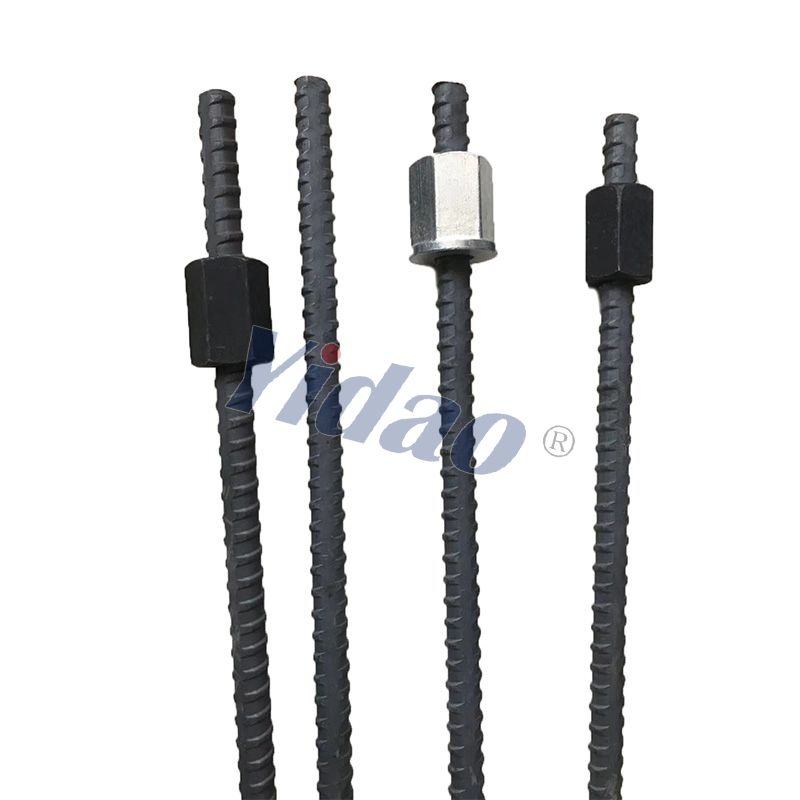How to Install Threaded Bar Anchors for Concrete?
Concrete structures are a fundamental part of our modern world, providing the strong foundation upon which we build our homes, bridges, and skyscrapers. To ensure the stability and longevity of these structures, it's crucial to use effective anchoring systems. Threaded bar anchors for concrete are a popular choice for various construction projects, offering exceptional strength and reliability. In this comprehensive guide, we will walk you through the step-by-step process of installing threaded bar anchors for concrete, ensuring your construction project is built to last.

Before diving into the installation process, let's first understand what threaded bar anchors are and why they are essential. Threaded bar anchors, also known as anchor rods or anchor bolts, are specially designed fasteners used to secure objects to concrete surfaces. They consist of a threaded shaft, a nut, and sometimes a washer.
These anchors are commonly used in construction for a wide range of applications, such as securing structural columns, heavy machinery, and even highway guardrails to concrete foundations. Their threaded design allows for a secure and adjustable connection, making them a go-to choice for engineers and builders.
Selecting the Right Threaded Bar Anchors
Choosing the correct threaded bar anchors is crucial to ensure the stability and safety of your construction project. Factors to consider when selecting threaded bar anchors include:
-Anchor Length: The length of the anchor should be sufficient to penetrate the concrete and provide the necessary embedment depth. This depth is typically specified in the project's structural drawings.
- Diameter: The diameter of the threaded bar anchor should match the design requirements. Common diameters include 1/2 inch, 5/8 inch, 3/4 inch, and 1 inch.
- Material: Thread bar anchors are available in various materials, such as carbon steel and stainless steel. The choice of material depends on the project's environmental conditions and load requirements.
Tools and Materials Required
Before you begin the installation process, gather the necessary tools and materials. Here's a list of what you'll need:
- Threaded Bar Anchors: Ensure you have the correct size and material specified for your project.
- Hammer Drill: To create holes in the concrete for anchor placement.
- Masonry Bits: High-quality masonry bits suitable for your anchor diameter.
- Wrench or Socket Set: For tightening the nuts onto the threaded bar anchors.
- Safety Gear: This includes safety glasses, ear protection, and gloves to ensure your safety during the installation process.
Installation Steps
Now, let's dive into the step-by-step process of installing threaded bar anchors for concrete:
a. Prepare the Concrete Surface
Start by cleaning the concrete surface where you intend to install the anchors. Remove any dust, debris, or contaminants that could affect the bond.
Mark the locations where the anchors will be installed using chalk or a pencil.
b. Drilling Holes
Using a hammer drill and the appropriate masonry bit, drill holes into the marked locations. Ensure that the hole diameter and depth match the specifications for your threaded bar anchors.
Remove any debris from the holes by blowing compressed air or using a wire brush.
c. Insert the Threaded Bar Anchors
Place the threaded bar anchors into the drilled holes, ensuring they are flush with the surface.
Tighten the nuts onto the threaded bar anchors using a wrench or socket set. Make sure they are secured firmly.
d. Final Inspection
Double-check the alignment and depth of the installed threaded bar anchors to ensure they meet the project's requirements.
Perform any necessary load tests or inspections as specified by the project engineer to confirm the anchors' integrity.
Conclusion
Installing threaded rebar anchors for concrete is a critical aspect of construction that demands precision and attention to detail. By following the steps outlined in this guide and selecting the right anchors for your project, you can ensure the safety and longevity of your concrete structures.
Remember that proper installation is vital, and it's always advisable to consult with a structural engineer or a construction professional to ensure your project's specific requirements are met. With the right threaded bar anchors and proper installation, you can build structures that stand the test of time.
584
0
0


Comments
All Comments (0)